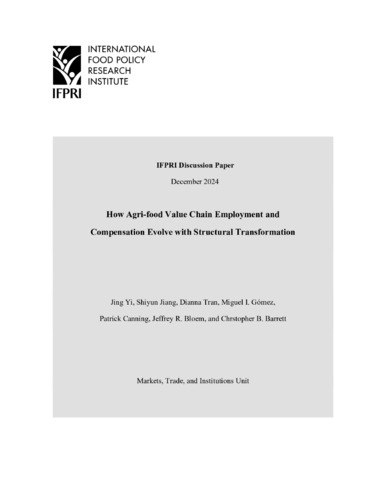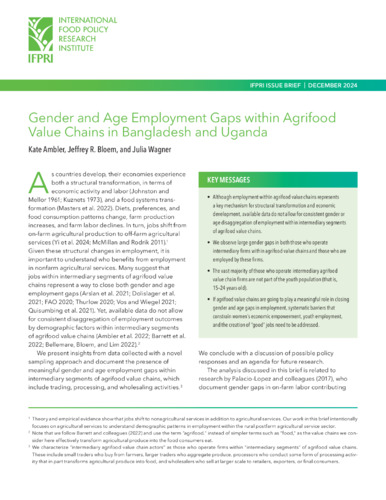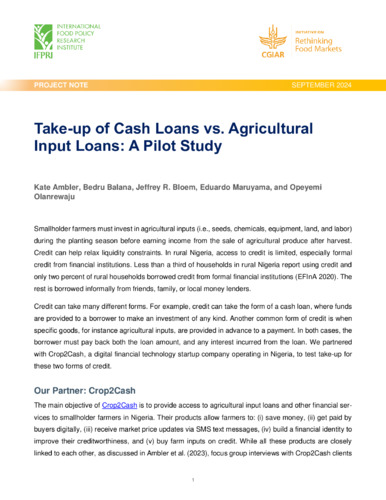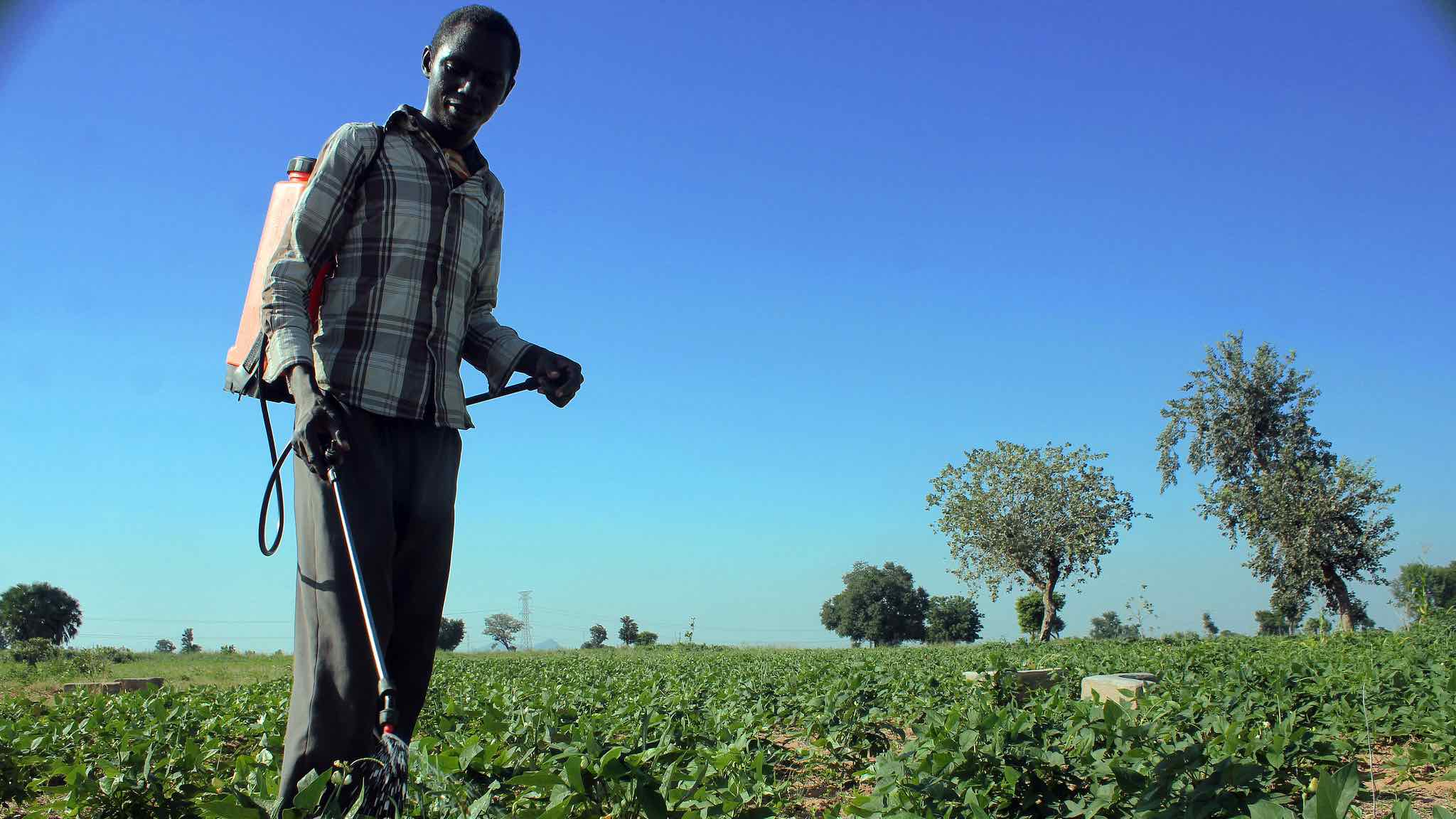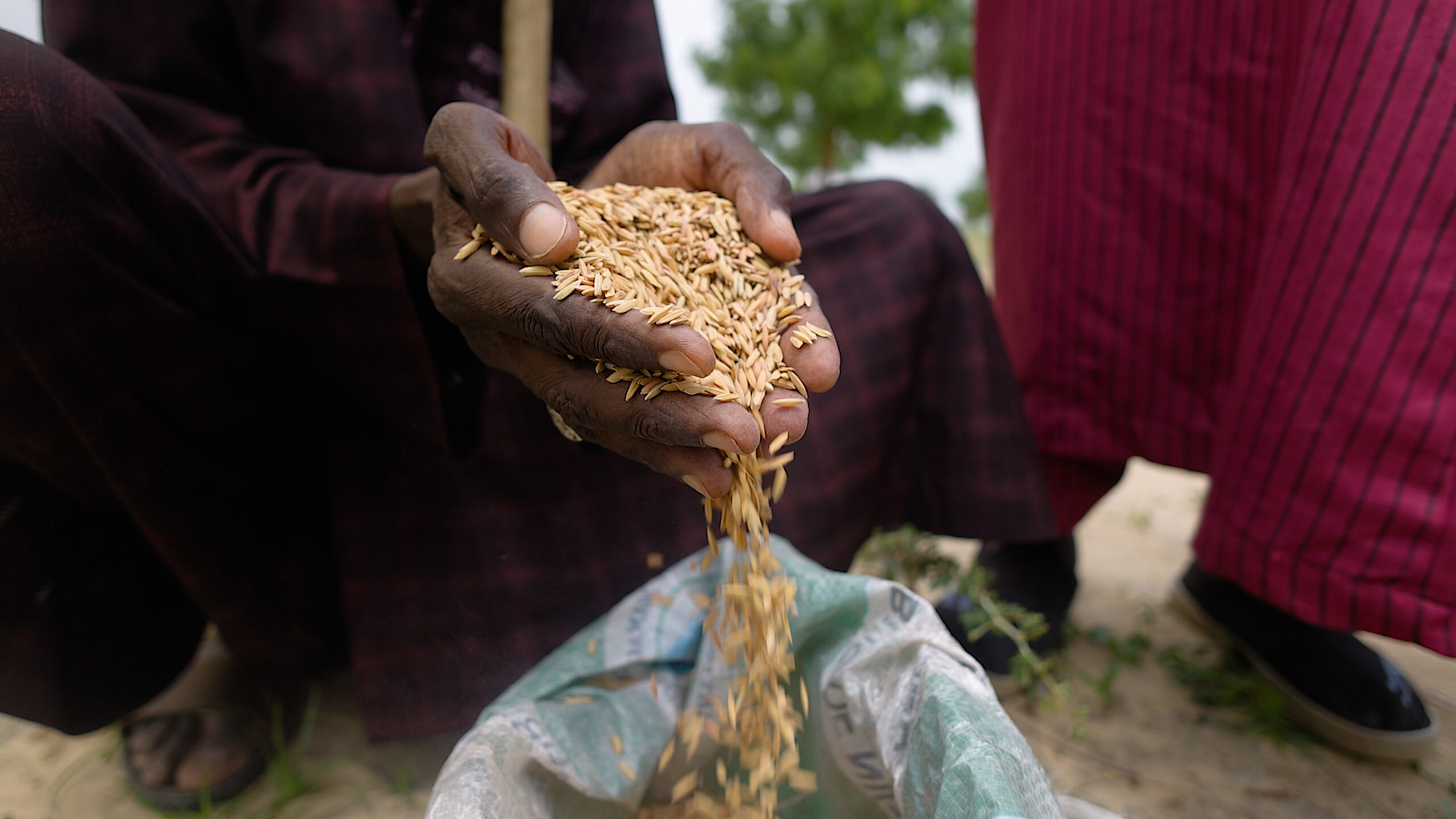Take-up of cash loans vs. agricultural input loans: A pilot study
Smallholder farmers must invest in agricultural inputs (i.e., seeds, chemicals, equipment, land, and labor) during the planting season before earning income from the sale of agricultural produce after harvest. Credit can help relax liquidity constraints. In rural Nigeria, access to credit is limited, especially formal credit from financial institutions. Less than a third of households in rural Nigeria report using credit and only two percent of rural households borrowed credit from formal financial institutions (EFInA 2020). The rest is borrowed informally from friends, family, or local money lenders. Credit can take many different forms. For example, credit can take the form of a cash loan, where funds are provided to a borrower to make an investment of any kind. Another common form of credit is when specific goods, for instance agricultural inputs, are provided in advance to a payment. In both cases, the borrower must pay back both the loan amount, and any interest incurred from the loan. We partnered with Crop2Cash, a digital financial technology startup company operating in Nigeria, to test take-up for
these two forms of credit.
Authors
Ambler, Kate; Balana, Bedru; Bloem, Jeffrey R.; Maruyama, Eduardo; Olanrewaju, Opeyemi
Citation
Ambler, Kate; Balana, Bedru; Bloem, Jeffrey R.; Maruyama, Eduardo; and Olanrewaju, Opeyemi. 2024. Take-up of cash loans vs. agricultural input loans: A pilot study. Rethinking Food Markets Initiative Project Note September 2024. Washington, DC: International Food Policy Research Institute. https://hdl.handle.net/10568/152224
Keywords
Southern Africa; Western Africa; Smallholders; Farm Inputs; Income; Agriculture; Credit; Loans
Access/Licence
Open Access
Project
Rethinking Food Markets
